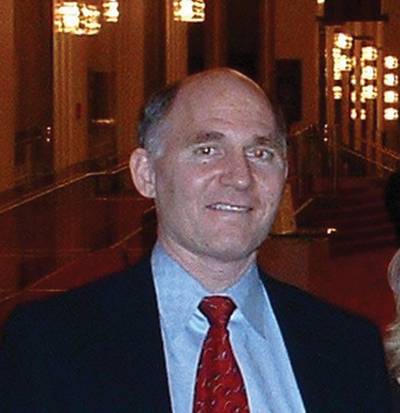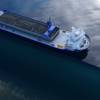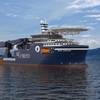Insights - Paul Hankins, President American Salvage Association
This month’s editorial calendar has, in part, as its focus, oil pollution, prevention and response. Or, in other words, missions and matters that cut to the very heart of the American Salvage Association (ASA) and the goals of its considerable membership. This month, ASA President Paul Hankins weighs in on a host of issues that impact the rapidly evolving world of salvage, the players that make up that sector of the marine industry, and why all of that is important. Mr. Hankins has over 30 years of experience in the marine industry and has participated in countless national level salvage and oil spill response operations and exercises. He has held positions with the Navy Supervisor of Salvage; with SERVS Alyeska in Valdez, Alaska; as Deputy Director of Maritime and Land Security at the U.S. Transportation Security Administration; and as president of the joint venture Donjon-SMIT, one of the five Salvage and Marine Fire Fighting Resource Provider networks, from 2005 to 2011. He is currently Vice President for Salvage Operations for Donjon Marine. Hankins graduated from the U.S. Naval Academy in 1981 with a Bachelors of Science in Naval Architecture and subsequently earned a Master’s degree in Environmental Management from George Washington University in 1991. Listen in as he talks about salvage, response and everything in between.
Your background in naval architecture is a logical connection to the skills needed in salvage, but it is arguably not seen too often, nor is it much publicized. Do those skills come into play on a daily basis for you?
Salvors come in all shapes and sizes, to be sure. Perhaps the defining characteristic is the ability to problem-solve on the fly and the desire to help our fellow mariners. Naval architecture is but one skill-set that provides background to these other capabilities. I would argue that rather than being a requirement, it may just be a way to understand what is going on quicker without those years of experience so vital to the salvage master’s repertoire.
The new Fi-Fi rules are here, and they are here to stay. How is that implementation going?
Implementation of anything new is always an opportunity. The new firefighting and salvage rules are no exception. They have required much more pre-event coordination between owner and salvor than in the past. The good news is that the regulations do not fundamentally change the way we conduct our business. Beyond the planning and coordinating BEFORE an event, when an event occurs we pretty much do it exactly the same – move as rapidly as possible to prevent or mitigate the effects of an accident.
Have the new Fi-Fi rules impacted your business?
True, the rules have provided a huge impetus for salvors to make investments in their capabilities. But even more importantly – institutionalizing the always extensive networks of professionals of many related industries so critical to our success has been the greatest positive effect in my opinion. The speed with which we are able to access available assets often makes all the difference during an event.
As part of the long awaited Non-tank Vessel Response Plan (NTVRP) and other Response Plan regulations, these regs are designed to improve preparedness and reaction to an incident, including a worst-case discharge, and improve effectiveness of shore-side and onboard response activities. What I describe above is testimony to that.
Care for the marine environment and the salvor’s role in that equation are both important components to a happy ending in marine casualties. When salvors make best efforts to contain an environmental disaster and the final salvage value does not reflect those efforts, making the salvor whole can be problematic. What’s the solution?
The solution is really quite simple. Adopt industry-wide standards that acknowledge the importance AND the value of a salvor’s efforts, even when the traditional remuneration process may not properly reflect the value of the effort. The SCOPIC clause of the traditional salvage contract, Lloyds Open Form (LOF), takes measures to do this and there has to be better industry-wide understanding of what it is meant to do. Another important element the ASA has been actively advocating is the concept of Responder Immunity. If salvors have to worry that reasonable and measured actions may subject themselves to a lawsuit if something goes amiss through some unforeseen consequence not of their own doing, then the time element that is so critical will be lost forever. Instead, we’ll all have to huddle with our lawyers to determine if an action is suit-proof. That radically changes the speed and the inventiveness of the salvor.
New regulations impact self-propelled non-tank vessels of 400 gross tons or greater that operate in navigable waters of the United States and carry any kind of oil as fuel for main propulsion. How many vessels does this entail and does industry have the capacity to absorb this business?
The number is continually debated – but we know it’s in the tens of thousands. But what’s important is that now each vessel owner will have had to have that important conversation with the salvor before an event happens. It’s not really about capacity, it’s about effective planning. Remember, we aren’t increasing the number of salvage events – we’re just improving the response to those that unfortunately do occur from time to time.
The new rule stipulates that non-tank vessel owners operating in and out of U.S. waters enter into agreements with a Salvage and Marine Firefighting (SMFF) provider and list predefined response resources in the VRP. Has ASA prescribed a standard contract / agreement form?
No, I think this is one area on which all ASA members are very much in agreement. The contracting mechanisms that are in place are more than adequate from this question’s perspective. How each individual salvor uses these existing contracts, or even develops new ones, is a commercial advantage that salvors will want to leverage. ASA has no desire or the mandate to step into that commercial marketplace.
Responder immunity: still the big hot button issue; the 600 pound gorilla in the room. Where are we at with this, what is ASA’s role in the process and are we any closer to a solution that is satisfactory to everyone?
As I said earlier, Responder Immunity is of vital importance to keep the responders in the business of responding. Imagine if your fire department had to check with its legal department before responding to your house fire. The same type of protections should apply to all responders who are responding in good faith. If there is something being done wrong or improper, the responder immunity provision does nothing to prevent holding the persons responsible for those actions accountable.
Pollution response has not necessarily been the traditional line of business for salvors. Some, but not all get involved with it. With the new regulations coming out, it will probably be part of the ASA membership’s revenue stream for a long time to come. Talk about the relationship between traditional pollution response consortiums and salvors that are emerging with a much bigger role in that equation.
What is traditional? A salvor has always been involved in PREVENTING pollution. The very act of recovering a vessel in danger of sinking or keeping a tank from being breached is in essence a response to PREVENT pollution. There is certainly a much stronger relationship with those that clean up spilled oil and with those that prevent that same oil from being spilled. What these regs do is to right the equation to some extent. Instead of concentrating on the oil after the fact, we are trying to prevent the spill from occurring in the first place. Using the fire department analogy, it’s important to be able to clean up after a fire – but it’s also important to prevent and extinguish that fire.
You’ve seen two major regulatory events in just the last couple of years that have affected your industry – Fi-Fi and non-tank rules. What’s happening today inside the beltway and how are you – as ASA President – involved? What’s the next disruptive event?
The so called Fi-Fi and non-tank rules are one and the same – the non-tank rules just extend most of the OPA-90 tanker provisions to a broader spectrum of the community, which has been in development for years. While any change isn’t easy, I’d argue it’s only been disruptive to those that haven’t been paying much attention to the relative success of the tanker regulations. But the regulations themselves in my opinion will have the net effect of making our responses more efficient and timely. As for the next disruptive event, that’s a loaded question. But if the question is, are there more regulations the ASA is advocating for, that answer is no. Responder immunity is the biggest legislative challenge we are faced with today.
How has contracting evolved over time? What’s the standard course for a salvage event today – from first call to final completion of assignment? Are the non-tank and Fi-Fi rules changing the nature and structure of the relationship between the salvor and the traditional customer at least on this side of the pond?
The only thing that is changing is making the relationship closer and more transparent. Having talked through the response mechanisms prior to an event always helps improve how that response is executed. The salvage rules are no exception.
(As published in the April 2014 edition of Marine News - www.marinelink.com)













